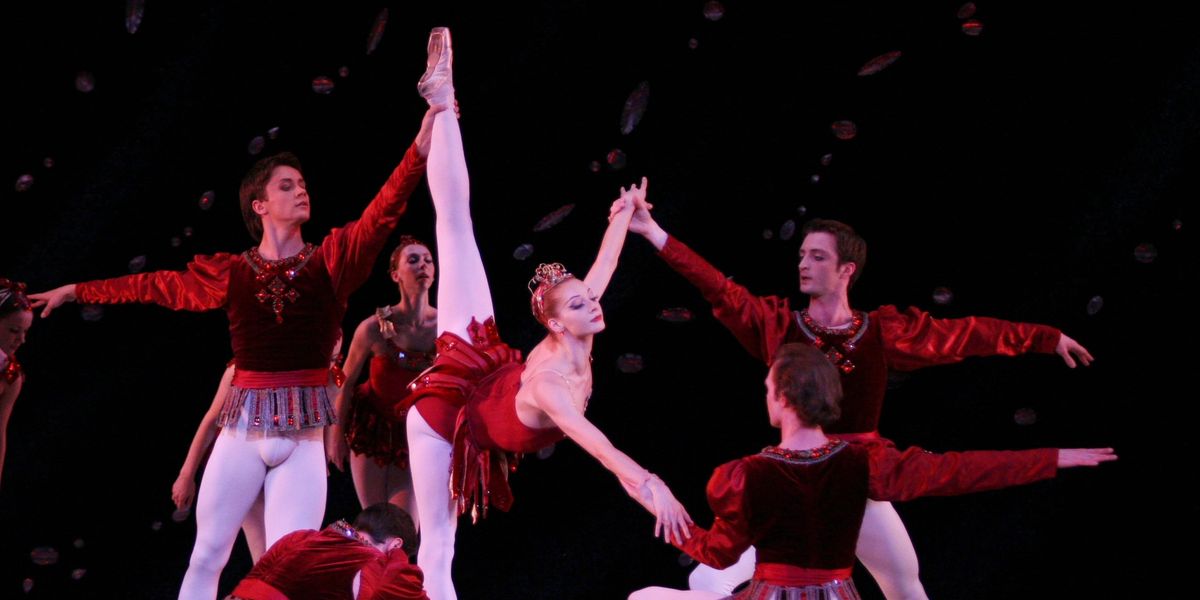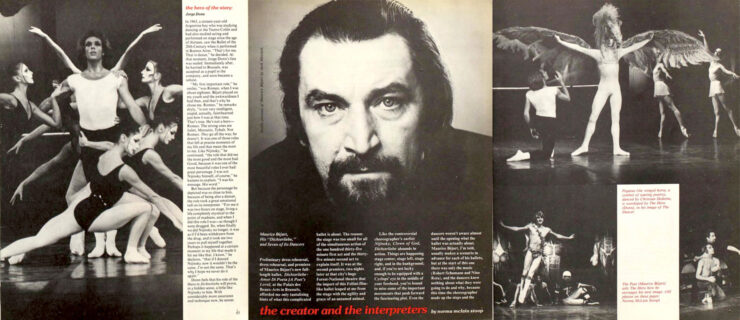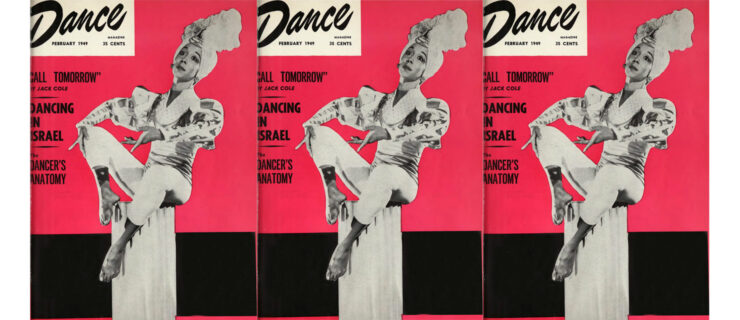Letter to the Editor from Alastair Macaulay: On Ballet's High Legs
Dear Editor,
I’ve just read Emma Sandall’s piece on hyperextension and the 180-degree position. It’s intelligent, interesting, well-written. But there are a few mistakes and some misleading remarks. I can’t resist writing the following.
1. If Guillem says Fonteyn said would have lifted her leg higher if she could, then that’s what Guillem says.
But she’s wrong. Keith Money’s book “Margot Assoluta” (published in 2000) includes a photo of Fonteyn in rehearsal doing a seconde almost to shoulder-height: she told Money “I can get the leg that high—but it ruins the line.” Fonteyn wanted level hips, something crucial to many ideas of placement but not discussed by Sandall.
2. Emma Sandall writes:
“This” (raising the leg above hip height) “was not an issue for dancers during the first couple hundred years of ballet’s history. Decorum demanded that the leg extend no higher than the hip. Lifting it further revealed too much leg, and displaying the area ‘down there’—the crotch—was taboo for women. For men, the issue was the suggested effeminacy (and hence homosexuality) of stretch over strength—an early-19th-century notion with residues to this day.”
Does Sandall have any sources for these claims about the first two centuries of ballet history? It’s ages since I researched this area, but (a) the women dancers of the mid-eighteenth century—when the gargouillade was invented—were obliged by the Paris Opéra to wear “caleçons de précaution”—safety underwear, in an age when women generally did not wear undies—to prevent the men in the audience from seeing their groins; (b) where on earth does Sandall hear reports of suggested effeminacy before 1900?
(A). Admittedly, the gargouillade reports are puzzling (Marie Allard is said to have established the step c.1750), since they raise questions of what skirts were worn for such jumps. But it seems likely that women were either hoisting their skirts with their hands, so that audiences could see what remains a tricky step today, or were sometimes wearing much shorter skirts than we see in illustrations. (Illustrations show the ballerina Subligny, who danced in the 1690s, in full-length dresses like a court lady; but the notation for one of her dances shows her doing a tour en l’air, and also shows her doing lots of fancy footwork that at least must have involved the skirts being lifted. It’s very possible she wore lighter and shorter skirts for some dances.) There are three paintings by Lancret of Camargo dancing in the 1730s: the one in the Washington National Gallery has men on the ground who sometimes are thought to be voyeurs who may be looking up her skirts. And the institutionalisation of caleçons de précaution c.1750 shows that audiences were somehow used to seeing the groin area beneath the skirts.
B. I’ve never read of complaints of male effeminacy in ballet before the twentieth century. In 1840, Théophile Gautier—who generally abominated male dancers as coarse brutes who spoiled the loveliness of ballet—praised the legs and jumps of Jules Perrot. Gautier, as in his novel “Mademoiselle de Maupin,” was quite interested in aspects of androgyny, as he also shows in his reviews of Fanny Elssler in male attire, but he never seems to bring up male effeminacy, even when he extols Perrot as “the male Taglioni;” or rather he seems not to think any such near-effeminacy is anything pejorative. I wonder when suggestions of male effeminacy came in. There were more male dancers in the nineteenth century, even in France after 1860, than we usually hear; they all seem to have been the opposite of effeminate.
3. Emma Sandall should be aware that hyperextension in ballet had two particular booms before our time, both connected to major political revolutions: the French in 1789 and the Russian in 1917. The writer Despréaux, who had been married to the star ballerina Guimard (who retired in 1789), wrote after her death in 1816 that ballet style had changed out of recognition since 1789-1790, with legs rising above hip height. (Ivor Guest quotes this in two of his histories.) There is plentiful evidence that ballet at this period became much more acrobatic and bravura in various ways. Illustrations of Auguste Vestris (whom surely nobody accused of effeminacy) show his seconde at hip height. The work of subsequent ballet teachers seems to have restored hip height as the gold standard by the 1820s. Then a similar trend to acrobatics occurred after the 1917 Russian revolution: extensions and lifts suddenly went much higher.
Balanchine seems to have invented none of this; he took his style from the Petrograd in which he graduated.
As Sandall remarks, another dance that employed acrobatics was the can-can. (Petipa is said to have taken a non-acrobatic step from it for “Paquita,” though I know this solely from hearsay.) Massine put a can-can into the ballet “La Boutique fantasque” (1919), ending with the ballerina on the floor in the splits. We take this kind of splits for granted today, but the critic Mary Clarke told me how one aristocratic female balletomane c.1948 would see those splits in “Boutique” and remark “Can’t be good for ’em!” I suspect it’s no accident that Balanchine incorporated one such use of the splits into the Terpsichore-Apollo pas de deux in his “Apollo” (1928): for him, the splits were now part of “la danse”—but a relatively new part.
But again (some) ballet teachers led the counter-revolution against this new acrobatic tendency. Cecchetti in particular—or Idzikowski on his behalf (it takes better scholars than I to tell their writings apart)—wrote in the 1920s that legs should go no higher than hip-height; to raise the leg higher was to engage with acrobatics rather than art.
4. Emma Sandall writes: “Marie Taglioni lifted hers some more in the mid-19th century and bourréed across the stage on pointe.”But there are surely no reports that Taglioni “bourréed” on point. Bourrées on point may only have come in with the blocked shoe later in the century; I know of no reports of ballerina bourrées until Pierina Legnani, whose bourrées in St Petersburg in the 1890s were compared to “strings of pearls” and for whose Odette and Raymonda bourrées became an important part of ballerina choreography.Did Taglioni lift the skirts more? The outline of the ballet dress changed with Taglioni; I don’t know that hems rose. There had already been very considerable variations in ballet hemlines in the era 1790-1820.
5. It would be nice to know how high penchées went in Petipa’s day. (It’s actually remarkably hard to define “penchée”. Is it determined by the angle of the torso, the front arm, the head, the eyes, the raised leg?)
Doug Fullington in Sandall’s piece says the notation never asks for legs to go higher than 90 degrees. Alexei Ratmansky, in my “Sleeping Beauty” questionnaire (“Ballet Review”, 2015), says Mathilde Kschessinskaya seems to have raised her leg to perhaps 100 degrees, though it’s possible Petipa may have disapproved. But I wonder if it is true to say, as Emma Sandall does, “Ballet was about nimble footwork and showing elegant angles of the body and torso, better achieved with the legs below 90 degrees” (my underlining); I think Petipa’s supported adagios show that 90 degrees was an ideal—not higher, not lower—for some positions.
6. To ask when the male penchée came in can involve a lot of research! In Britain, the male dancer John Gilpin was famous for extending legs above hip height in the 1950s. Nureyev’s turnout and use of his legs were generally sensational in the West in the early 1960s; in their wake, Ashton began to develop the male penchée arabesque in his choreography for Anthony Dowell.
I spent a lot of time a few years ago investigating the male penchée in Balanchine. It’s hard to pin down, but it seems likely to me that he only liked men to do penchée as a transitional or lunging position, never as a fixed one.
7. I know that Ninette de Valois disapproved of men lifting their legs onto the barre up till perhaps the late 1960s. The Royal Ballet School teacher Richard Glasstone has often recalled how there used to be an exchange of top male students between the Royal and Paris Opera schools: when the Royal sent Stephen Beagley to Paris c.1974, the French teachers suggested he should be encouraged to raise his leg to the barre more, but when Phillip Broomhead was sent c. 1980, the French teachers noted that things had now gone too far and he was now dangerously hyperextended.
8. The split jeté, the split penchée, the split grand développé all became part of the ballet vocabulary long before Sylvie Guillem. Ashton’s “Trois Gymnopédies” (“Monotones,” 1965) begins with a woman lying in a 180-degree split on the floor; she is then raised in that position (“like a chicken on a spit”) and rotated on point. In one of his last ballets, “Varii Capricci” (1983), Ashton had the young Phillip Broomhead and Mark Freeman, as two of the ballet’s four subsidiary young men, casually do split positions—one did 180-degree penchée, the other 180-degree splits on the floor. To my eye, those are instances where hyperextension can be poetic; Balanchine choreography has many more.
9. Nonetheless, Fonteyn’s point about line remains. To this day, it’s an issue in Balanchine choreography—at least around City Ballet and the School of American Ballet—whether dancers do (or should)! raise one hip seriously when extending a leg, especially to the side. I wish Sandall and Osterweis had discussed this.
Guillem was criticised, notably by Arlene Croce, for tilting the hips. She was a longterm guest artist with the Royal Ballet, where other dancers since her have raised the leg more or less as high, but with more precise placement of the hip and pelvis.
I find it interesting that the word “line” is seldom used about ballet today. When I arrived in the 1970s, “line” and “musicality” were the two top criteria for many critics. Did anyone praise Guillem for line? (Maria Tallchief told Arlene Croce that Guillem “has no middle,” meaning no core strength.) Darcey Bussell, whose legs went higher than previous British ballerinas and who shared the top spot at the Royal with Guillem, was praised for line, though not remotely in the way that Fonteyn, Beriosova, and Sibley (darlings of the New York audience for many years as well as in London) were.
As I’ve said, I don’t object to high extensions where the style makes it look poetic. I do wish there were more discussion about line and placement; and more discussion about what ballet becomes when those are not discussed. I’m aware that much of the above is beyond what Emma Sandall meant to discuss, but I think all of it is highly relevant. To discuss legs going above hip height without discussing hips remaining level is a central omission.
All best
Alastair Macaulay




